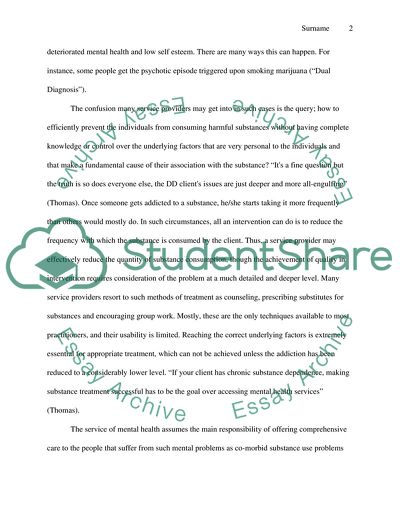The Theory of Dual Diagnosis: a Mental Disorder and Treatment of such Literature review - 1. https://studentshare.org/medical-science/1750347-what-is-a-dual-diagnosis
The Theory of Dual Diagnosis: A Mental Disorder and Treatment of Such Literature Review - 1. https://studentshare.org/medical-science/1750347-what-is-a-dual-diagnosis.


